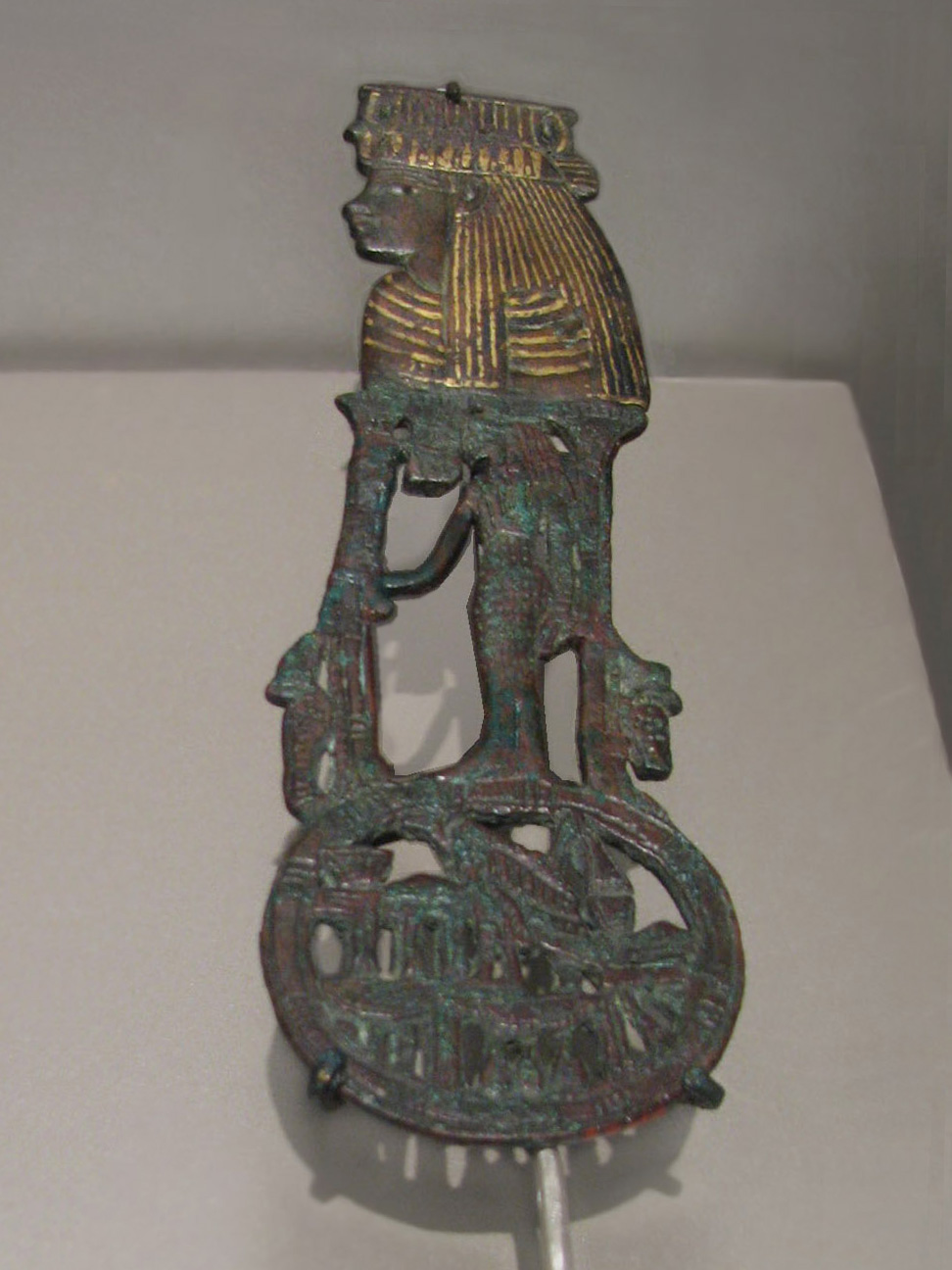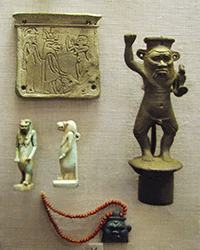
Menat Counterpoise
Bronze, gold, 2 1/8 x 6 3/4 in. (5.4 x 17.2 cm)
New Kingdom, XVIII Dynasty, ca. 1390-1353 B.C.E.
Brooklyn #49.116, Charles Edwin Wilbour Fund
Photo © Joan Lansberry, May 2008-2016
 Menat Counterpoise Bronze, gold, 2 1/8 x 6 3/4 in. (5.4 x 17.2 cm) New Kingdom, XVIII Dynasty, ca. 1390-1353 B.C.E. Brooklyn #49.116, Charles Edwin Wilbour Fund Photo © Joan Lansberry, May 2008-2016 |
|
(From info card:) "This object was placed at the back of a multistringed necklace to balance its weight. Also, the beads of the necklace were shaken as a rattle in temple rituals, producing a sound thought to be pleasing to goddesses. This example was dedicated to the goddess Mut, represented as both a standing female and a vulture with a scepter. The queen's head carved at the top symbolizes the close connection between Mut and the reigning queen, her earthly counterpart." "The menat was another object that was shaken during the worship of Hathor. The 'necklace' part of the menat consists of numerous strands of small beads gathered together at the ends and attached to single strands of larger beads. Originally each end of the necklace terminated in a counterpoise - a keyhole-shaped pendent that was worn at the back to balance the weight of the necklace. By the New Kingdom, a single counterpoise joined together the ends of the beaded strands. Menat necklaces are depicted in a variety of ways: worn hanging about the neck, worn about the neck with the counterpoise held extended horizonally (during actual worship), and held in the hand (see cat.no. 93, where Renenutet holds a menat necklace)." From _Mistress of the House, Mistress of Heaven: women in ancient Egypt_ By Anne K. Capel, Glenn Markoe, Cincinnati Art Museum, Brooklyn Museum, pages 99-100) I have a photo of Renenutet who is holding the menat as she sits beside her husband, a statue which is at the Met Museum. Here's some more items which have been cropped out of the photo above:
(From the Museum website)
When I first assembled this gallery in October, 2008, the museum did not have a photo of these items, as of May 2011, they do have a better photo than mine:
(From the Museum website for a similar amulet of Bes:)
 Bes and Taweret @ OIM |


